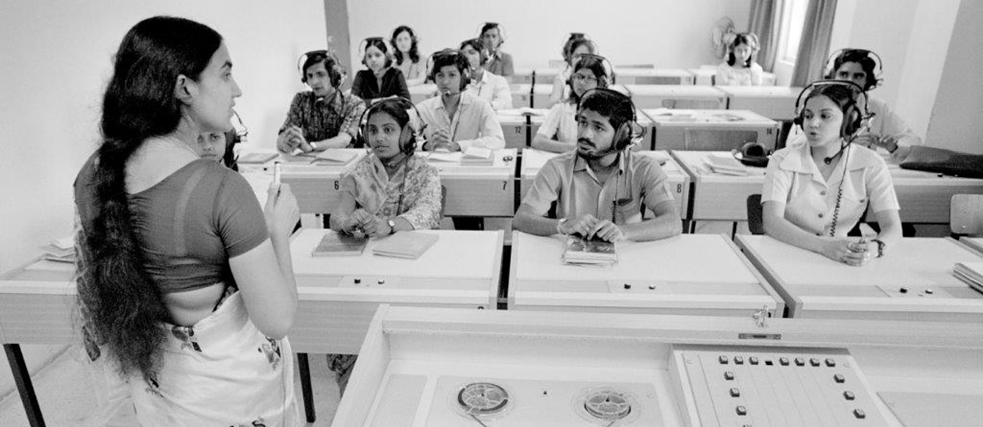Study and teaching
Daily Journalistic Work and Journalistic Training

In the year 2015, I was advised by our industry associates to introduce Public Relations as a compulsory course for the Journalism undergraduate students. It was predicted that 1-minute news casts, under 5-minute news reads and under 5-minute digital stories with interactive storytelling needed skilled employable content writers, moonlighting as journalists.
By Perrie Subramaniam
This tectonic shift in the role and value of a journalist in India, from being a mirror, to being an associate of the greater good-doers was a worrying concern for many educators and practitioners alike. A moment to introspect on what this tweaked journalistic education would bring about, when it became the norm in the ever progressive, well-meaning, and self-indulgent modern Indian society.
In India, journalism was used to awaken the social consciousness - engaging the disengaged and voicing issues of the disenfranchised. Post-independence, in the 1950s, family run native language papers continued representing the marginalised and rural realities: The Hindu, The Malayalam Manorama, Eenadu, Rajastaan Patrika, as media leaders created rich, native language traditions in journalism, where people’s progress and issues were the mandate. These media houses followed responsible investigative journalism. Analysis was an important point of discussion. The educated society as well as the rural and semi urban societies where India lived, laboured, produced and prospered, were truly represented.
a circus of popular news room formats of the world
However, since 1990s, Journalism in India has come to be dominated by the English language media. Led by MNC’s Bennett & Coleman group, Star Network & CNBC. Their deep pockets have transplanted in India, a circus of popular news room formats of the world. Dominance of the MNC media houses birthed also the supply chain of privately partnered Journalism graduate schools like Symbiosis Institute of Media & Communication (SIMC) in Pune, Indian Institute of Mass Communication (IIMC) in Delhi, Amity University in Delhi and Asian College of Journalism (ACJ) in Chennai. 95% of their curriculum is designed by these media houses. The infrastructure and training in these institutions is world class, expensive and aimed at the urban elite.The revival of the native language press is the key to re-establishing the true multi-cultural society of India. It is the umbilical cord that will connect people to the foundations of who and what India was.
Perrie Subramaniam
A means to revive our values, our systems and herald the progress in indigenous thought to reclaim our essence. The only way to stem the growing divisive public opinions of the half-informed Indians is for them to know how deep our foundations were laid and to understand the purposes of a multicultural population. Also, school education in the native tongues should be actively encouraged. I’m of the opinion that we think in our birth language! While a majority of Indian households speak a native tongue, only a few of us pursue education in that mother tongue. For transactional reasons, we educate, conduct business, train, write and create in English.
Continuing with the principles of ‘small is beautiful’, there are a few state-owned media schools like Jamia Millia Islamia in Delhi, School of Journalism Hyderabad, the privately promoted Azim Premji University in Bangalore and Indian Institute of Journalism & New Media (IIJNM) in Bangalore, that have an active curriculum to initiate elite English-speaking graduates into grassroot and community-based journalism. Thereby stressing the need for re-engaging in native language proficiencies.
The reason for such an adventure by these schools, is thanks to the efforts of community-based active journalism in pockets of rural India; in northern India - Khabar Lahariya- a paper published in 3 rural dialects of Hindi, Ananda Vikatan in Tamil, Malayam Manorama in Malayalam and Lankesh Patrike in Kannada, to mention a few. These media houses are owned locally, sometimes by the community, and strive to represent the issues in the grassroots. At St. Xavier’s College, Mumbai, we work to develop our journalistic education based on the Jesuit principles which focus on Magis (more) in pursuing a profession. Our students are involved in community projects; from using media tools, to protecting the green lung of Mumbai’s National Park, to gathering data on migrant labourers and their livelihood needs for policy representations.
In the words of Mr. Finley Peter Dunne, we strive to ‘comfort the afflicted, afflict the comfortable’. In time, we hope to instil in our student community the love for the multicultural values and continue to be the journalists who moonlight as commercial-content-writers.
Comments
Comment